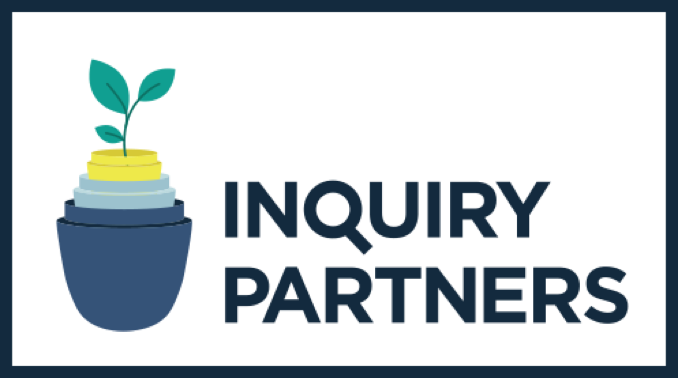Developing together with a client: Using Collaborative Developmental Action Inquiry (CDAI) in the here-and-now to develop both client and practitioner
Case Author: Cara Miller, MDiv, PhD
Case Reviewer: Bill Torbert, PhD
This case is about bringing CDAI to bear on the implausible idea that a consultant and a client can develop with one another in real-time, in the midst of contracted work. I recently spent six months with a financial services client, building a development program for a group of 60 junior associates. It took 6months to craft the work as a result of their unique organizational culture, and their hyper-vigilance about preserving the meticulously curated, philosophical stance on every function of the firm.
When I finally traveled to their campus, the regional landscape was richly green and smelled overwhelming like verdant growth, a welcome to my California, drought-familiar nose.I caught wind of the organizational equivalent to that aroma with the internal team responsible for the development training project, as well as with the stakeholders involved by that point. They came across as somewhat anxious, protective, slow to adjust and integrate the ideas that challenged their expectations and assumptions during the design and contracting of the training. However, in person they were flush with signs of readiness and ripeness, developmental energy, intellectual curiosity, and eagerness for growth. They remained balanced, knowing that even in their state of excitement and conviction, the readiness of the larger organization would be a slow crescendo but, their dynamic remained decidedly enthusiastic.
We started the onsite project with the CHCO, her team of 6, and 15 culture ambassadors who are deployed to different departments of the firm. We spent a day training, preparing,reviewing, creating readiness, and coordination of the training workshops. Two identical, 4-hour workshops would take place in one day, training 30 associates each.During the first workshop of the day, the CHCO and I had clunky moments facilitating, and it seemed the engagement of the participants fell flat a few times. I became committed in the moment, mostly out of urgency,to finding a rhythm between supporting her in the moment and preserving my ability to deliver the content we had designated. It was a tricky balance and captivated most of my attention during the first workshop. But immediately afterward, during a break we had scheduled for eating and light review, the CHCO and her team gathered around a table, called me over and began to make a complete overhaul of the workshop (which should have been identical) scheduled for that afternoon. They collaboratively suggested changes in the seating configuration, the slide deck, the timing, the energy level, almost everything. My initial thoughts were,

“What do you think you’re doing? We’ve been working this 6 months, it’s world-class content. Just tell them there’s no time to change it all, deliver it again, it’s what you’re being paid to do.”
Thanks to years of CDAI practice and foibles, disciplining my mind toward inquiry and commitment to the practice of staying curious, my interior and exterior observer became present and alert. This client wanted me to make a total revision to our contracted program and my professional delivery of it, in 45 minutes. I had merely moments on the spot, in front of all the trainers, and the CHCO to make the decision. It took every ounce of guerilla-consultant agility and numbskull-trainer resilience in me to look into their faces, and agree to it.
Before you begin to build a case justifying why I should’ve refused, hear me out. What’s interesting in this case, and the reason I ultimately took them up on the fete, was that they weren’t complaining about the first session, or criticizing me. They had paid careful attention to the real time feedback and their collective data from the early session, resisted judging it or protecting their investment in the existing format,and decided they agreed with itall. They heard that the morning felt slow, and in their firm, they work at such a pace that I truly hardly saw anyone ever eat. Fair critique, dial up the pace. They also felt the session was too information-rich, and in their company culture, they have almost zero negative capability or desire to understand background or philosophy, they are significantly practice obsessed. Reasonable feedback considering, so we cut the theory bits and invite cases from participants in the room. In addition, they all determined that the session, and me as the instructor, was not “raw” or “living” enough to them. Ok, that one felt close to the vest but, I took the invitation, sent my own defensiveness or “high horsing” packing, and committed to dialing up my energy, to becoming more dynamic. I do declare, being pushed to that level of risk, raising the stakes more than a step-level, and having to do so in less than an hour brought quite an injection of edgy, catalytic energy to the task. In the moment, it felt dangerous on behalf of all stakeholders, and yet developmentally exhilarating. It threatened to run fluidly wild, and yet paradoxically became more appropriately structured in that it followed the natural silhouette of the learners’ engagement and stories.
I certainly felt proud of them, and of myself. We made a deep impact, achieved learning outcomes with the firm participants, and with the senior people we trained of the days before. But more remarkably, I think we developed the consultant (me), the CHCO, the internal team, and the trained facilitator sin explicit and implicit ways through the design and execution, and then redesign and execution of the project collaboratively, in real time. Both the CHCO and I discovered a companionship our own developmental journeys as a result of the trajectory and willingness to be available to this project and its delivery together. With the foundation and practice of CDAI, a client and consultant can develop one another openly, in real time, while delivering on an effective project plan. An improbable and yet meaningful developmental outcome for all.
Reviewer reflection: Bill Torbert, PhD
In this case we see the power of intentional learning, vulnerability, skill in facilitation, confidence in leading teams, and a certain sophisticated playfulness all in service to team and organizational objectives. The challenge from the quick-learner-client brought forth a CDAI-inspired response from Dr. Miller thereby allowing her to share more explicitly the powerful impact of using single-, double-, and triple-loop feedback and inquiry in the midst of action. Power was shared in this way, or maybe it is more correctly stated as it was given and taken as Cara and the client experimented with present-moment action and inquiry. Dr. Miller not only modeled simultaneous action and inquiry, she explored in an unrehearsed way how to mutually create and hold a learning environment that was essential for this client to do the kind of work it intended to do.
We also see modeled here, by Cara, a new way for an organization to invest in leadership development in combining real-time, individual and team learning, and enhancing capacity to adapt via collaboration and flexibility. These attributes allow for an organization to exercise greater adaptive ability, increased alignment, and enhanced capacity to meet extraordinary challenges.






